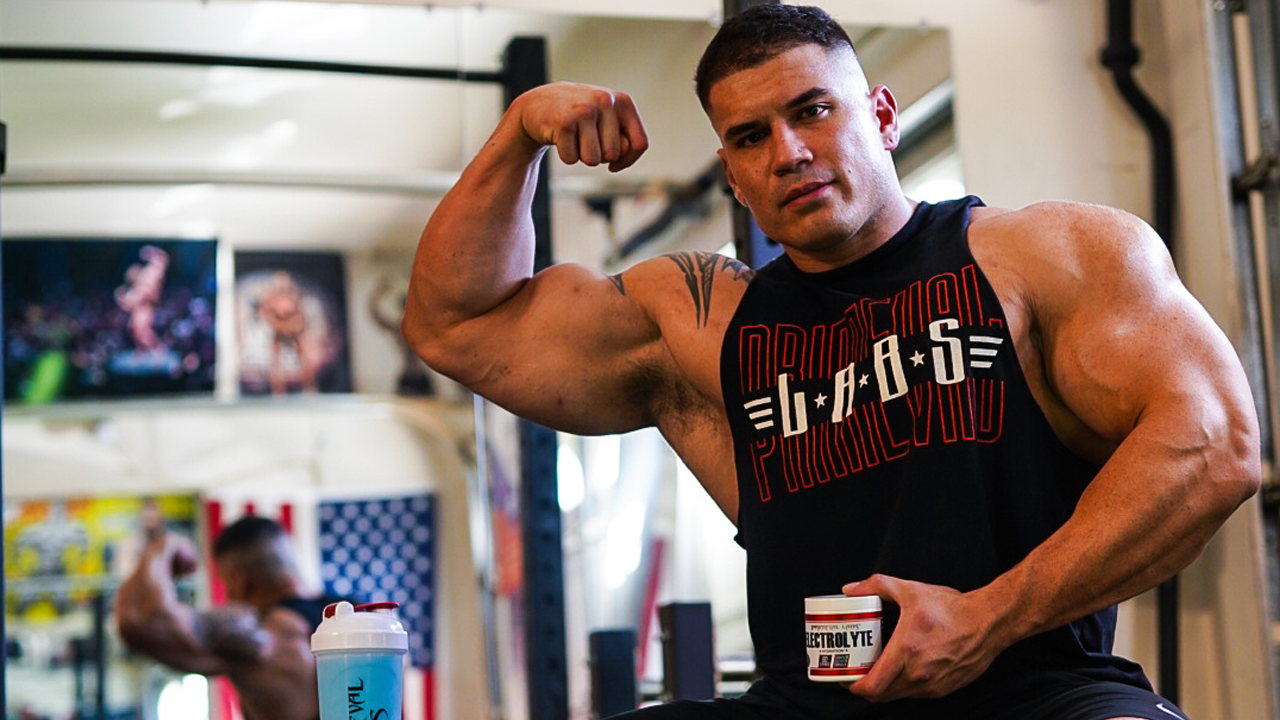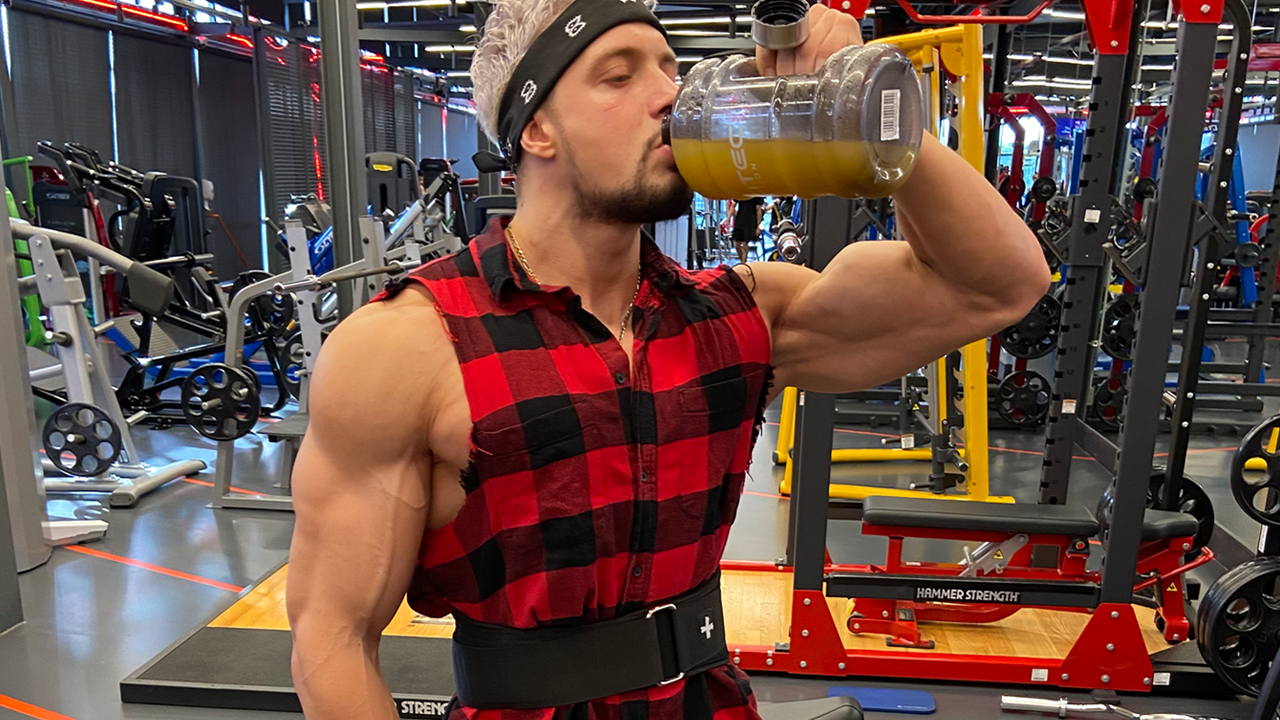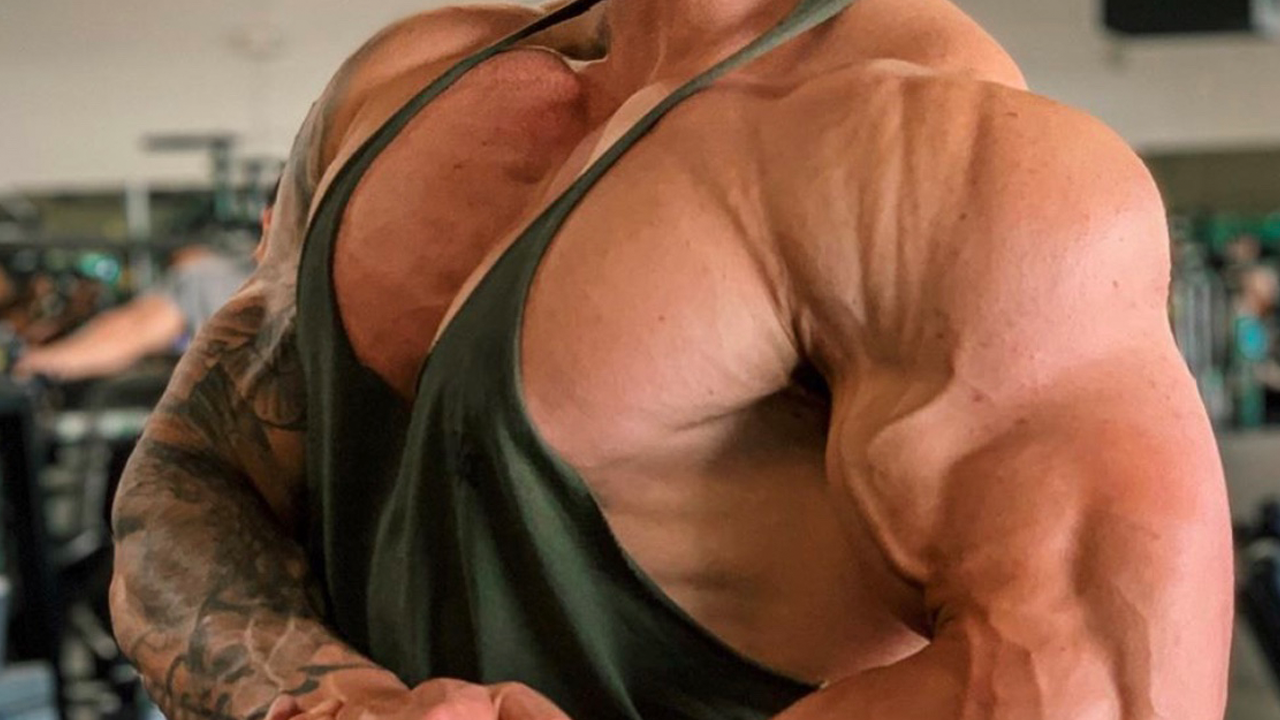At last, we’ve arrived at the fifth and final installment of the GET BIG Series -- the one you’ve all been waiting for -- ARMS.
And, who doesn’t want bigger, more muscular arms?!
If you’ve been following the GET BIG series so far, you’ve seen how we’ve attacked each of the body’s major muscle groups, including chest, back, shoulders, and legs.
Today’s workout is much in line with the training philosophies discussed in the previous entries -- tried and true exercises, good form, progressive overload, and hard work.
Do you want bigger arms?
Then, let’s GO!
How to Get Big Arms: Training Tips
Don’t Avoid Compound Movements
So often when it comes to building bigger arms, lifters focus purely on isolation exercises.
And, don’t get us wrong, isolation exercises definitely have their place in helping build bigger, stronger arms.
But…
That doesn’t mean compound movements have to get thrown by the wayside.
If fact, certain compound movements (like chin ups and close grip presses) are some of the best exercises for building big arms.
Plus, isolation exercises have a relatively narrow range for overload. Over the course of your entire lifting career, you may only be able to take your dumbbell curls from 15 pounds to 40 pounds.
Since compound exercises involve multiple muscle groups, they have a wider bandwidth for loading, which allows you to impose some very high tension on the smaller muscle groups of the arms.
As such, you’ll see some heavy compound exercises in each of the Get BIG Arms workouts below (along with the usual lot of biceps and triceps isolation movements).
Remember, when it comes to building as much muscle as possible, having a variety of exercises that load the muscles from different angles and with different loads is a very good thing!
Watch the Elbows
One of the biggest mistakes lifters make when performing their arm exercises is allowing their arms to drift forward and up.
When this happens, the stress is taken off of the target muscles and placed on other muscle groups -- upper pecs, shoulders, traps, etc. This most often occurs in lifters who are using too heavy of a weight, and trying to muscle up a weight just to satisfy their ego.
Now, there are some exceptions to the rule when it’s ok to not have the elbows in line with the body (preacher curls, spider curls, overhead extensions, etc.), but in general to maximize tension on target muscles (biceps and triceps), focus on keeping your elbows “pinned” to your sides at all times.
Chances are, if you do this, you’ll need to use considerably less weight than you’re used to using, but that’s ok. You’ll be using a more appropriate weight that allows you to make sure the arm muscles are doing the work and not the other major muscle groups.
Variety Can Be a Good Thing
This not only applies to exercise selection but also to the rep ranges with which you work.
Typical arm workouts simply have you perform 3-4 different types of curls and pushdowns for 3 sets of 8-12 reps.
While there’s nothing inherently wrong with this sort of arm workout, it can be dreadfully boring. Moreover, it’s not really giving you the best “bang” for your training “buck”.
The biceps and triceps respond incredibly well to a broad spectrum of rep ranges that will help to maximally stimulate all the muscle fibers in your arms for optimal development and growth.
As such, we have you working in several different rep ranges in the following workouts.
Form Over Ego
This really goes without saying at this point, but it bears mentioning, especially with regards to arm training, because (if we’re being frank), arm exercises are the ones people are the most sloppy with (well that and laterals).
If you’re having to jump, jive, and wail to get the weight up, your ego chose a weight your muscles can’t handle.
This ultimately reduces how much work the biceps and triceps are doing, which means they’re not going to get a good training effect and ultimately won’t grow very much for all the “work” that you think you’re doing.
Don’t sacrifice form for the sake of trying to eke out more repetitions or use a heavier weight.
Sure, your ego might take a hit, but you’ll ultimately get a better workout and experience less stress and strain on your joints, ligaments, and connective tissue.
Make Every Rep Count
Compared to the muscle groups of the back and legs, the biceps and triceps are rather small.
As such, they have a rather limited range of motion, which means that the time it takes less time to complete a set of 8-12 reps than it does for larger muscle groups. This also means that the amount of time the muscle is actually under tension in a single rep is even lower.
This lack of sufficient time under tension is one of the leading reasons most people have trouble growing their arms -- they’re simply not exposing the tissues to enough stress during training.
But, don’t worry we can fix that by making the most of every single rep.
Far too often when performing a curl or pushdown, we mindlessly go through the motions, content to just bang out a quick 8-10 reps and check the box in the log book.
Taking this kind of attitude is exactly why you haven’t put any decent size on your arms in over a year.

To get more from your arm exercises, and actually see some growth, you need to “milk” every rep.
Rather than heave-ho the weight up and let gravity divebomb it down as quickly as possible, take a full 3 seconds to lower the weight. Squeeze the muscle as hard as you can at the point of peak contraction for a count of 2, and at the bottom of the rep pause for another second, making sure you get a full, complete stretch on the muscle.
In other words, make each rep as challenging for your muscles as possible.
This extra tension and stress will do wonders to increase the amount of work the arm muscles have to do, and will lead to dramatic changes in your overall arm development.
Make Sure You’re Eating Enough
You want to get big arms, right?
Then you’re going to need to structure your nutrition plan such that it facilitates muscle growth (i.e. a calorie surplus).
Even the best arm workouts in the world won’t do a damn bit of good to grow your arms if you aren’t giving your body enough nutrients to grow.
It’s plain and simple.
How many calories do you need to eat to gain weight and build muscle?
Generally speaking, you need to consume about 10-15% above your TDEE.
To learn more about calculating TDEE and how to choose a calorie surplus to build muscle and limit fat gain, click here.
Get Big Arms Workout
As with all the other previous entries in the Get BIG series (Chest, Shoulders, Legs, & Back), we have split your weekly arm training into two separate workouts.
This allows for an overall higher quality of work in each session, which means more gains over the long haul.
Since this is an arms specialization program, you may want to consider scaling back the training volume and intensity for your other major muscle groups so that your body can dedicate more resources to recovery and growth of the biceps and triceps.
Don’t worry, your chest, back, shoulders, and legs won’t shrivel if you only train them once a week.
One workout per muscle group per week is more than enough to hit your maintenance or minimum effective volume and maintain your gains.
Now, let’s get to the workouts!
|
Arms Workout A |
Sets |
Reps |
|
Close Grip Bench Press |
3 |
6-8 |
|
Barbell or EZ Bar Curls |
3 |
8-10 |
|
V-Bar Pushdowns* |
3 |
10-12 |
|
Cable Curls* |
3 |
10-12 |
|
Overhead Tricep Extension |
2 |
12-15 |
|
Dumbbell Hammer Curl |
2 |
12-15 |
*Note: Perform as a superset
|
Arms Workout B |
Sets |
Reps |
|
Weighted Chin Ups |
3 |
8-10 |
|
Weighted Dips |
3 |
8-10 |
|
Prone Incline Dumbbell Curl |
3 |
10-12 |
|
Dumbbell Incline Tricep Extension |
3 |
10-12 |
|
Preacher Curl Machine* |
1 |
100 |
|
EZ Bar Pushdown* |
1 |
100 |
*Note: Select a weight you can perform for 20-25 reps before reaching failure. Use rest-pause to complete all 100 reps before racking the weight. You may take brief breaks as you fatigue, but do not let go of the bar until all 100 reps are complete.














Leave a comment
This site is protected by hCaptcha and the hCaptcha Privacy Policy and Terms of Service apply.